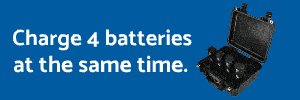I have been tasked with trying to find the best drone for a coastal flooding organization.
I have a current 107 and have consulted with this organization in the past. They now want to get a drone to get photos/video of flooding in coastal areas.
The drone would have to have good wind resistance as alot of times the flooding is caused by low pressure systems and the wind blowing from a set point.
I currently have a Mavic 2 Enterprise Zoom and a Anafi Thermal as a personal drones but this organization would want to get its own.
So what it would need:
Good wind resistance
Good zoom camera
Rain Resistance
Able to operate in urban area with interference
Live feed
Possible mapping to show coastal erosion and maybe even estimate the loss of beach/sand with appropriate software
And please feel free to add what else anyone thinks may be needed for this project.
I know the DJI 200 and 210 look to be solid choices, but I want to see what others think.
Also how would a thermal camera be in regards to seeing flood waters at night?
I would be the main pilot, and we would apply for waivers for what we deem we need to.
Thanks in advance!
I have a current 107 and have consulted with this organization in the past. They now want to get a drone to get photos/video of flooding in coastal areas.
The drone would have to have good wind resistance as alot of times the flooding is caused by low pressure systems and the wind blowing from a set point.
I currently have a Mavic 2 Enterprise Zoom and a Anafi Thermal as a personal drones but this organization would want to get its own.
So what it would need:
Good wind resistance
Good zoom camera
Rain Resistance
Able to operate in urban area with interference
Live feed
Possible mapping to show coastal erosion and maybe even estimate the loss of beach/sand with appropriate software
And please feel free to add what else anyone thinks may be needed for this project.
I know the DJI 200 and 210 look to be solid choices, but I want to see what others think.
Also how would a thermal camera be in regards to seeing flood waters at night?
I would be the main pilot, and we would apply for waivers for what we deem we need to.
Thanks in advance!






